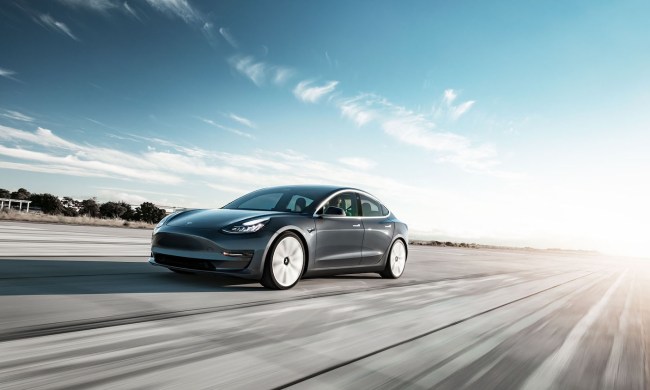American Honda Motor Company and General Motors will partner on GM’s Cruise self-driving unit, arguing once again that developing safe autonomous vehicle tech is too big a task for even the largest automobile manufacturers to handle alone. In addition to $2.75 billion, Honda will also participate with engineering resources, Reuters reports.
The deal structure includes a $750 million initial payment in return for a 5.7 percent stake in the Cruise division. Honda will pay the remaining $2 billion over a 12-year period in the form of development work and fees.
General Motors originally purchased the autonomous car startup for a reported $1 billion in 2016.
GM is currently developing its third-generation self-driving car, named the Cruise AV, at its Orion Lake, Michigan assembly plant. The company has 100 test vehicles on the road in San Francisco. Reuters reported that General Motors CEO Mary Barra said the company would not move to other markets for testing at this time.
Commenting on the Honda investment, GM President Dan Ammann said, “The longstanding relationship we have with Honda will allow us to move very quickly in ramping up our efforts.”
Stating that GM has been “very selective” in any dealings with potential investors, Ammann also said, “we will evaluate other investment opportunities as they come along.”
“We’re moving as quickly as we can to get to the point where we can initially deploy the technology and then scale it …,” Ammann continued in a talk with analysts. “This is an effort that requires very, very significant resources to pull off.”
Honda is also in continuing talks with Alphabet’s Waymo. Referring to the announced investment in the GM self-driving unit, Honda Chief Operating Officer Seiji Kuraishi said, “This investment is based on a shared vision and their (GM’s and Cruise’s) superior technologies in this area.”
Additional funding is in the wings from Japan’s Softbank, a large investment group that, by tradition, focuses on technology infrastructure companies. In May, GM announced that the Softbank Vision Fund would invest $2.25 million in the GM Cruise Unit. At the same time, GM committed an additional $1 billion in GM Cruise when the Softbank deal is done, according to the announcement.
Notably, on Thursday, October 4, Softbank and Toyota announced a “strategic partnership to facilitate the creation of new mobility services.”
All this talk about investments and partnerships underscores the complexity and the long game of putting self-driving vehicles everyone will trust, meaning passengers, automakers, government regulators, and insurance companies.
Earlier statements by automakers including Volvo and Tesla that Level 3 and Level 4 self-driving vehicles would be available for sale by 2020 or 2021, meaning self-driving to the point where the vehicles are fully self-operational in most but not all driving scenarios, now seem overly optimistic.
Waymo and GM’s Cruise are now the two largest and most well-funded self-driving car development entities, but further partnerships involving those two companies and others are likely.



